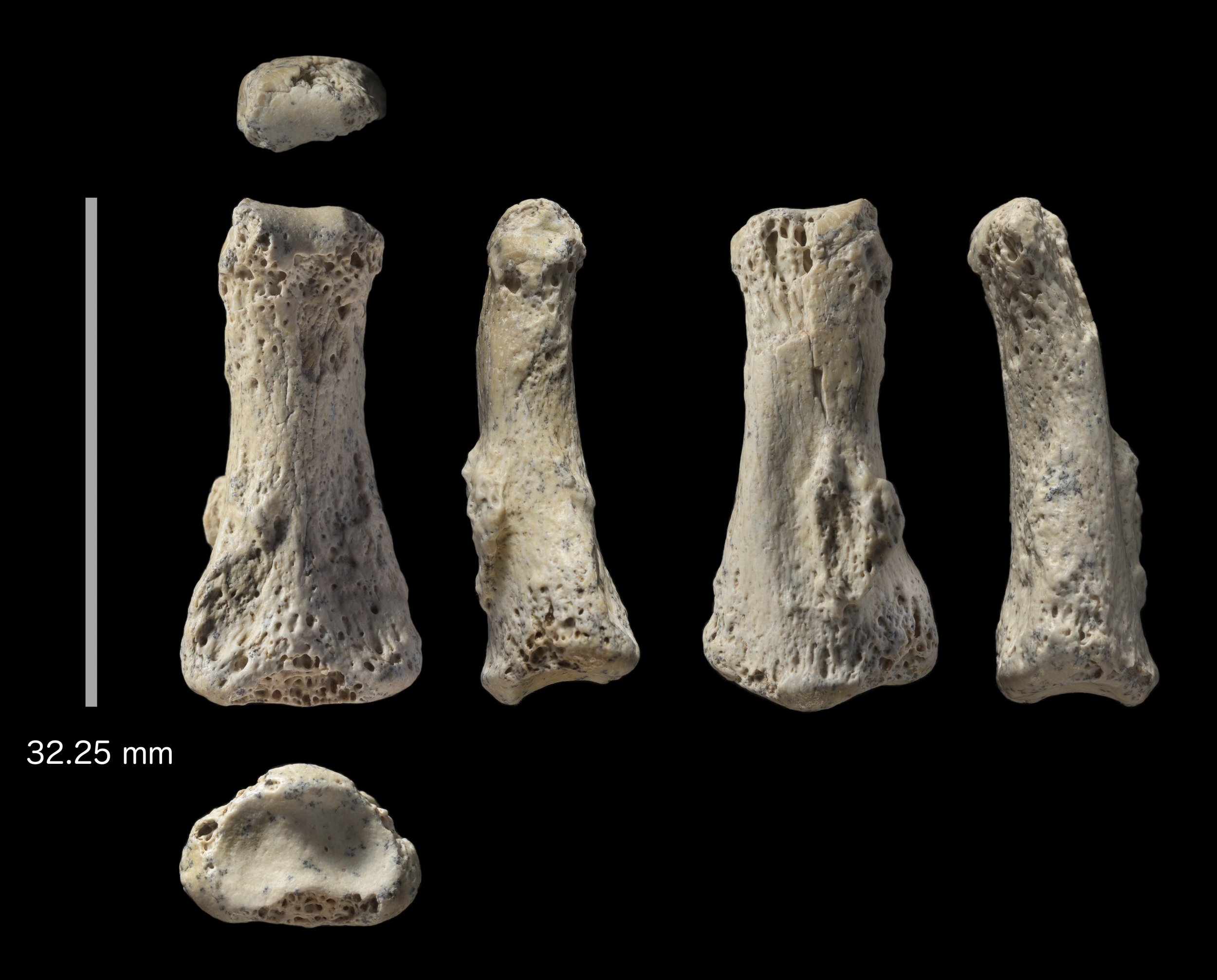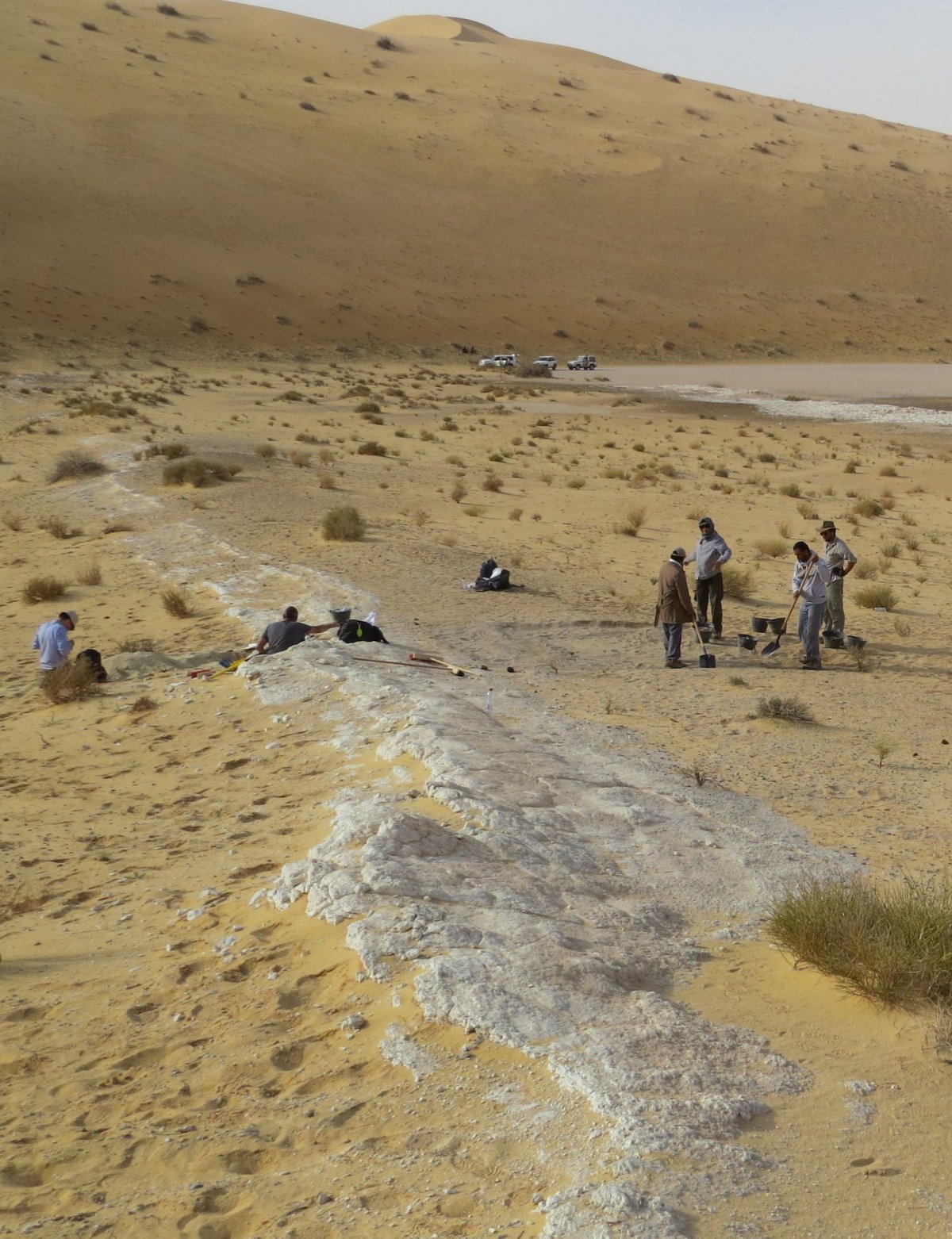
Researchers have directly dated the earliest-ever fossil from an anatomically modern human found outside of Africa and the Levant. This 90,000-year-old fossilized finger rewrites traditional theories of early migration, beating expectations by some 25,000 years.
Homo sapiens, the team thinks, were exploring what was once the wet grassland of Saudi Arabia far earlier than previously thought. Humans may not have left Africa in one big wave, but in a series of trickles. The research is published in Nature Ecology and Evolution.
An Incredible Find
Paleontologist Iyad Zalmout was returning from lunch on January 20, 2016, when he spotted a bone, rounded at both ends, peeking out of the ground at the archaeological site of Al Wusta, Saudi Arabia.
He plucked it deftly from the surface and scratched his head. What was this bone? An animal finger or maybe even a toe?
"[I scratched] my head for a few minutes as I tried to build a picture of who or what this bone belonged to," Zalmout, who works at Saudi Geological Survey, told Newsweek. Within five minutes he was sure it was a finger bone from a primate.
That evening, back at base camp in Tayma, the researchers dug out an encyclopedia and confirmed the finger bone belonged to a member of a Homo species—and maybe even an anatomically modern human.
Extensive testing at institutions around the world revealed not only was this the finger bone of a modern human, but it was also the oldest directly dated Homo sapiens fossil ever found outside of Africa and the Levant. Researchers dated the fossil between 85,000 and 90,000 years old, which is up to 25,000 years earlier than expected for this region.

Where Exactly Is the Levant?
The Levant historically refers to countries along the eastern shores of the Mediterranean sea, including modern-day Israel, where a number of important ancient discoveries have been made. Earlier this year, for example, scientists estimated that a Homo sapiens jaw from the country was up to 200,000 years old—the oldest ever discovered outside of Africa.

Study author Huw Groucutt from the University of Oxford described the Levant as the "doorstep to Africa," directly adjacent to the continent, in a press conference. While the jaw was a remarkable discovery, the Saudi Arabian finger may tell us even more about our ancestors' paths around the world.
Related: Oldest modern human fossil ever discovered outside Africa rewrites timeline of early migration
The Al Wusta site is about 400 miles from such Levantine sites and has a very different ecosystem. These ancient humans, Groucutt said, were "on the move," adapting to different environments as they explored.
Two large excavations at the site yielded bones from animals including hippos as well as humans. Evidence survives of a once-permanent lake.
The local climate flipped from dry to wet numerous times and, during at least one of these wet periods, humans took advantage of an area favorable to animals, vegetation and long-lasting water sources.
'A Dream Come True'
Michael Petraglia, another study author, described the discovery as "a dream come true" in the press conference.
This ancient finger could be the strongest fossil evidence yet that humans left Africa much earlier than the traditional textbook "Out of Africa" theory suggests.
Under this theory, humans successfully spread beyond Africa in a large dispersal some 60,00 years ago, Petraglia, an archaeologist at the Max Planck Institute for the Science of Human History, Jena, Germany, explained. Bolstered by earlier genetic evidence, the theory has stood paramount for many years.
This new discovery supports a concept of multiple, smaller dispersals out of Africa.
A key strength of the finger is how sure scientists are about its age. Unlike many ancient discoveries, this fossil has been directly dated. Rather than estimate the age of the fossil from its surrounding sediment, the team was able to check the finger itself.
In this case, the team performed uranium series dating, which uses lasers to estimate the age of fossils. Sediment and animal fossil dating all agreed on timing.
Researchers found nearly 400 stone tools at the site, suggesting a relatively dense human population. Not densely populated like New York or London, Groucutt and Petraglia explained, but home to multiple bands of mobile hunter-gatherers.
They may have moved opportunistically via numerous lakes and grasslands that sprang up and disappeared. In fact, the team thinks there may have been some 15,000 lakes across the Nefud desert of northern Saudi Arabia, reactivated by monsoons.
Improvements in genetic study and a broader focus on relatively unexplored sites like Saudi Arabia could expand this picture even further, Petraglia and Groucutt added.
Uncommon Knowledge
Newsweek is committed to challenging conventional wisdom and finding connections in the search for common ground.
Newsweek is committed to challenging conventional wisdom and finding connections in the search for common ground.
About the writer
Katherine Hignett is a reporter based in London. She currently covers current affairs, health and science. Prior to joining Newsweek ... Read more
To read how Newsweek uses AI as a newsroom tool, Click here.








